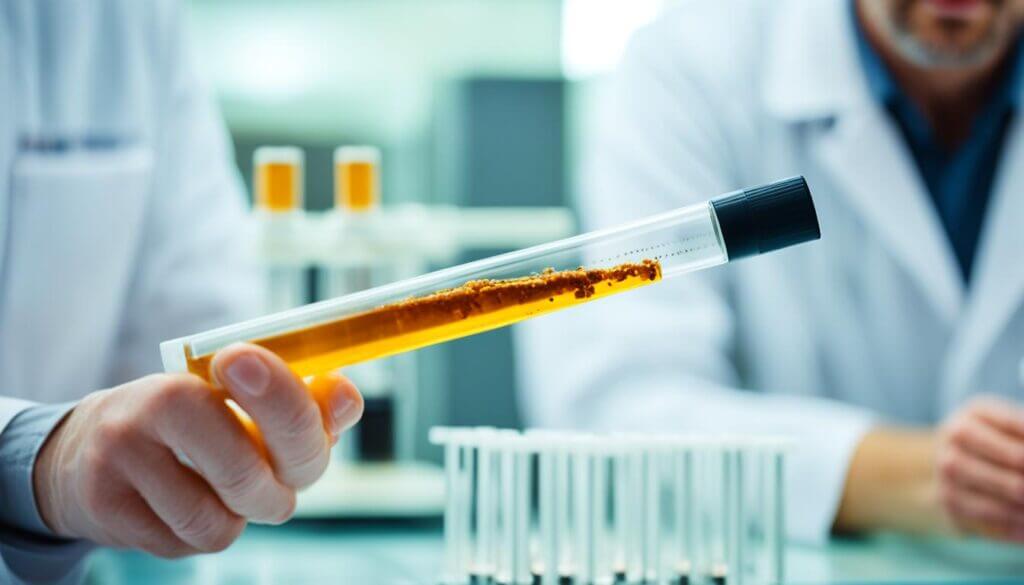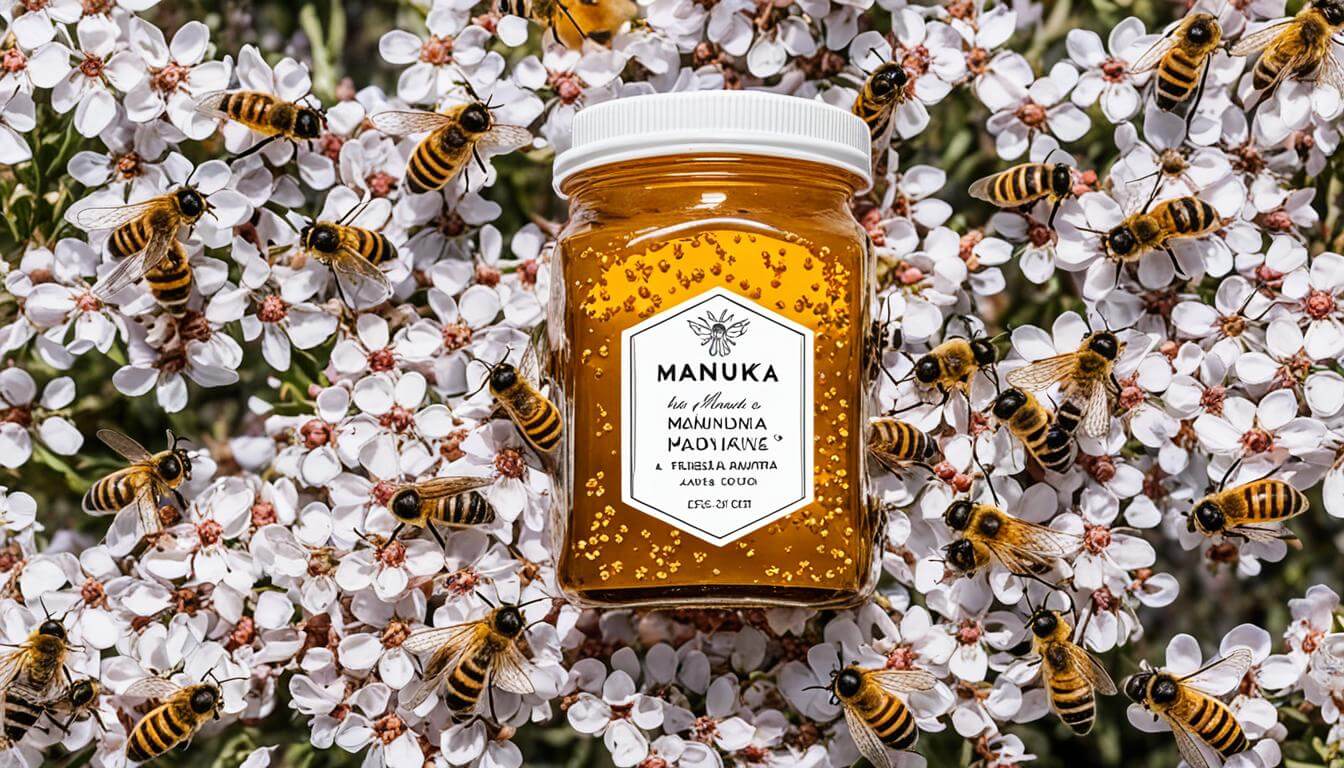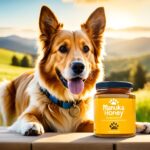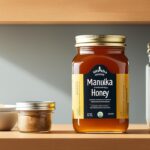Each year, only about 2,800 tonnes of Manuka honey are produced worldwide, a mere drop in the global honey market bucket. This startling scarcity underscores the high cost of Manuka honey, a popular superfood renowned for its unique properties and health benefits.
Famed for its rich, earthy flavor and potent antimicrobial qualities, Manuka honey originates from the nectar of the native New Zealand Mānuka bush. High demand and limited production are just the tip of the iceberg when unraveling the factors behind its luxury status.
Beyond the limited supply, specialized testing ensures that consumers get the pure, potent product they are paying for. Each jar of Manuka honey is a product of immense dedication, from hive to shelf – a fact that is reflected in every spoonful.
Devotees of this golden elixir are aware that the price is not merely for taste; it is an investment in a natural resource with extraordinary qualities that have earned it a well-deserved place at the pinnacle of health foods. So what precisely contributes to the high cost of Manuka honey, elevating it above other varieties? Continue reading to understand the justified reasoning behind the investment.
Unveiling the Magic Ingredient: Methylglyoxal (MGO)
Manuka honey distinguishes itself with its extraordinary level of Methylglyoxal (MGO), considered the magic ingredient responsible for the honey’s potent antibacterial properties. The MGO levels in Manuka honey not only provide an overwhelming advantage over the hydrogen peroxide content found in standard raw honeys, but these levels are also a key indicator of the honey’s overall efficiency in health applications. It’s the MGO that collaborates with other natural compounds within the honey to form a robust defense against bacteria and infection. As consumers become increasingly health-conscious, the demand for products with a verifiable impact is soaring, and Manuka honey with high MGO levels offers an enticing promise of well-being.
To fully appreciate the essence of Manuka honey, one must understand the direct correlation between the MGO concentration and the honey’s bactericidal strength. The higher the MGO rating, the more formidable the honey’s antimicrobial capabilities, making it a sought-after commodity in both the health supplement and medical arenas. An MGO 83+ rating is where the notable health benefits begin to manifest, and as these ratings increase, so does their health-giving potential, contributing to the product’s value on the market.
Below is an overview of MGO ratings and what they signify for the potency and antibacterial qualities of Manuka honey. A fundamental aspect to note is the UMF (Unique Manuka Factor) rating, which often accompanies MGO levels. The UMF rating system measures not just the MGO, but a range of other indicators to ensure the quality and authenticity of the honey, providing a comprehensive gauge of its antibacterial and therapeutic potency.
| MGO Rating | Antibacterial Strength | UMF Rating Equivalent | Potential Health Benefits |
|---|---|---|---|
| MGO 83+ | Minimum recommended | UMF 5+ | Mild antibacterial effects, suitable for daily dietary supplement |
| MGO 263+ | Medium strength | UMF 10+ | Can improve digestive symptoms, sore throats, and can be used for minor wound healing |
| MGO 514+ | High strength | UMF 15+ | Strong antibacterial effects suitable for targeted therapeutic use |
| MGO 829+ | Superior strength | UMF 20+ | Used in professional healthcare settings for medical purposes |
why is manuka honey so expensive
The steep price of Manuka honey often takes consumers by surprise, but several critical factors justify its cost. Key among these are the rarity of the New Zealand native Leptospermum Scoparium, or Mānuka tree, and the arduous production challenges that beekeepers face. Manuka honey demand also continues to surge as more and more individuals seek the unique health benefits it offers, further driving up its market value.
Manuka honey’s rarity stems from the limited geographic range of the Mānuka tree itself. Predominantly found in the remote wilds of New Zealand, the habitat of these trees is not widespread, thus constraining the volume of honey that can be produced. The location of these trees presents logistical hurdles; difficult terrain often necessitates unconventional means of transportation, such as helicopters, to tend to the beehives, a factor deeply affecting the cost.
Beyond the challenges in accessibility, Manuka honey production faces a conundrum of Mother Nature’s whims. The flowering season is notably brief, and adverse weather can impede bees from collecting the nectar, resulting in unpredictable yields that can vary greatly from one season to the next. Nevertheless, beekeepers must maintain their efforts and bear the high operational costs regardless of the season’s success, further contributing to the honey’s rarity and expense.
Manuka honey’s cost factors are compounded further by the burgeoning global demand for this health-boosting superfood. Its acknowledged antimicrobial and tissue regenerative properties cement its position not just as a dietary supplement but as an active ingredient in the wellness and medical industries, where it is especially valued. In summary, these aspects form a complex web of reasons that make Manuka honey a premium product, cherished for its source and efficacy.
Distinctive Production: The Art of Crafting Manuka Honey
The artistry involved in pure Manuka honey making is a nuanced dance with nature. This precious substance is not just the product of bees but also of the unwavering beekeeping expertise that requires patience, precision, and a deep respect for the environment. Beekeepers must harness their in-depth knowledge of hive management to carefully select the optimal locations for their hives, often situated in remote hive locations. The challenges they face are not only in making the honey but ensuring its purity and premium quality every step of the way.
Only accessible by the most intrepid beekeepers, these remote locations offer pristine, unadulterated environments necessary for producing the finest Manuka honey. The cost of such dedication? A venture that involves not just a trek but often a flight, as helicopters whisk beekeepers and their equipment to these isolated sites. The image of hives dotting the New Zealand wilderness, underscored by the hum of bees, is a testament to the commitment these artisans have to crafting a truly exceptional product.
In the narrow window of 2-6 weeks when the Manuka trees bloom, the weather holds the cards that can either bless the harvest with abundance or hedge it with scarcity. With expertise honed through experience, beekeepers monitor the delicate balance of bee health and environmental factors, making crucial decisions that impact not only the season’s yield but the very essence of the honey itself.
| Component | Importance in Manuka Honey Production |
|---|---|
| Hive Location | Must be in unspoiled, remote areas to capture the unique Manuka essence. |
| Beekeeping Knowledge | Essential for sustainable hive management and ensuring bee health. |
| Weather Conditions | Crucial for timing the bloom and nectar flow of Manuka trees. |
| Accessibility | Frequently requires air transport, adding to the honey’s exclusivity and cost. |
The result of this symphony of human effort and natural contribution is nothing less than a liquid gold that truly earns its place as a luxurious and health-supporting delicacy. It’s a beautiful alchemy of nature and know-how that yields a product beloved across the globe.
The Rarity of Manuka Honey: Limited by Nature Itself
The exclusive nature of New Zealand Manuka production is one of the primary factors contributing to the luxurious status of Manuka honey. This rarity is not simply a matter of geographic exclusivity, but also due to the natural limitations imposed by the environment in which it thrives. The Manuka tree (Leptospermum scoparium), which is native to New Zealand, exhibits a limited flowering period each year, with blossoms that last only a few weeks.
To better understand the impact of these limitations on availability and cost, consider the performance of Manuka trees through different seasons:
| Season | Flowering Status | Impact on Honey Production |
|---|---|---|
| Spring | Peak Blooming | Optimal production if weather conditions are favorable |
| Summer/Autumn | Off-season | No production due to the absence of flowers |
| Winter | Dormant | Preparation period for beekeepers and hives; no honey production |
| Varies Yearly | Dependent on weather | Inconsistent yield based on the length and quality of flowering period |
Beekeepers have adapted to these natural cycles, but cannot control the natural limitations such as weather conditions, which are pivotal for the Manuka honey yield. The dense Manuka patches ideal for bee habitats are located in areas that can often become inaccessible due to adverse weather, further compounding the difficulties of sustainable production. Hence, each jar of Manuka honey not only brings with it the essence of New Zealand’s lush flora but also tells a story of survival against the odds imposed by nature.

Given these factors, the high value and cost of Manuka honey reflect more than just its consumer popularity – they signify respect for the honey’s unique origins and the intricate dance with nature that beekeepers must perform to harvest it. With the knowledge of these constraints, consumers are better able to appreciate the profound worth of every golden drop within their reach.
Manuka Honey’s Multifaceted Health Benefits
Attesting to the wide-ranging health potentials of Manuka honey are its powerful antimicrobial effects, which have firmly established its utility in both traditional and modern medical applications. Rich in antioxidants, Manuka honey enters the arena against disease by aiding the body’s intrinsic ability to combat free radicals, thereby contributing to disease prevention and the deceleration of the aging process. But Manuka honey’s prowess extends further—its remarkable tissue regeneration qualities have rendered it a critical component in accelerating the healing of severe burns and other skin injuries.
Medical grade Manuka honey takes these attributes a step further, undergoing advanced purification processes to meet the stringent safety standards required in clinical settings. The result is a product of exceptional purity and efficacy, aligning with the healthcare industry’s rigorous benchmarks. As hospitals globally adopt Manuka honey for wound dressing and other therapeutic uses, we see a clear reflection of these benefits in the product’s value proposition.
In support of these claims, let’s dive into a structured outline of the key health benefits of Manuka honey:
| Health Benefit | Manuka Honey Component | Expected Impact |
|---|---|---|
| Antimicrobial Action | Methylglyoxal (MGO) | Bacterial inhibition, especially in wound treatment |
| Antioxidant Property | Phenolic compounds | Neutralizing free radicals, reducing oxidative stress |
| Tissue Regeneration | Natural enzymes and acidity | Promoting skin repair and regrowth in damaged tissues |
| Medical Application | Purified Manuka Honey | Advanced wound care and improved surgical outcomes |
It is through this multifaceted lens that we must view the investment in medical grade Manuka honey, not only as a culinary delight but as a scientifically-backed contributor to health and healing. Its premium is a testament to its manifold virtues, encompassing everything from antioxidants that tackle pernicious free radicals to its capacity for encouraging tissue regeneration at a cellular level.
Diving into the UMF and What It Really Means
When tasting Manuka honey, a spoonful might be delightful, but it’s the Unique Manuka Factor (UMF) that signifies its true value. Let’s explore the UMF rating system, an essential tool for assessing Manuka honey quality. Originating in New Zealand, this grading standard is meticulously controlled by the reputable UMF Honey Association. The UMF label isn’t just a random number; it represents a promise of Manuka honey’s distinctive properties, purity, and power.
The intricacies of the UMF rating system help consumers navigate the world of Manuka honey with confidence. Here’s how the numbers break down:
| UMF Rating | Leptosperin (mg/kg) | Methylglyoxal, MGO (mg/kg) | Dihydroxyacetone, DHA (mg/kg) | Non-Peroxide Activity (NPA) |
|---|---|---|---|---|
| UMF 5+ | 83 | 100 | 300 | Similar to 5% phenol |
| UMF 10+ | 263 | 300 | 570 | Similar to 10% phenol |
| UMF 15+ | 514 | 514 | 850 | Similar to 15% phenol |
| UMF 20+ | 829 | 829 | 1130 | Similar to 20% phenol |
Manuka honey carrying a higher UMF rating signifies an increased concentration of Leptosperin, Methylglyoxal (MGO), Dihydroxyacetone (DHA), and Non-Peroxide Activity (NPA). These elements are the guardians of Manuka honey’s quality, reflecting its enhanced potency and expected therapeutic benefits. A jar of UMF 20+ Manuka honey, for instance, possesses a significant concentration of these compounds, deemed superior in both health benefits and antibacterial efficiency.
The meticulous attention to the detailed composition of Manuka honey and the governance of its quality standards by the UMF Honey Association ensures that when you select Manuka honey off the shelf, you’re not just picking a sweetener, but a product with assured health-boosting properties. These quality markers, represented by the coveted UMF ratings, directly contribute to the premium pricing of Manuka honey, distinguishing it from countless other varieties on the market.
Manuka vs. Multifloral Honey – Spot the Difference
When it comes to choosing Manuka honey, consumers are faced with options between mono-floral Manuka honey and multi-floral Manuka blend. The primary difference lies in the source of the nectar and the subsequent quality and health benefits provided by each type. Mono-floral Manuka honey is considered the gold standard, gathered primarily from the nectar of the Manuka bush, lending it a higher MGO concentration and thus greater antibacterial properties.
On the other hand, the multi-floral blend incorporates nectar from various flowers alongside the Manuka, which often results in a more affordable price point. To ensure the quality of the honey purchased, consumers should engage in rigorous authenticity testing, a process that involves checking for both pollen content and the presence of specific compounds, guaranteeing the honey’s Manuka origin.
Understanding these varieties is not just about preference, but also about the benefits and authenticity that each offers. With the rise in popularity of Manuka honey, meticulous label scrutiny is a must for any discerning buyer. Here’s a simple guide to understand the key differences between these two types of Manuka honey:
| Feature | Mono-floral Manuka Honey | Multi-floral Manuka Blend |
|---|---|---|
| Nectar Source | Predominantly Manuka bush | Manuka bush and other flowers |
| Price Point | Higher due to rarity and purity | More affordable option |
| MGO Concentration | Higher MGO, more potent antibacterial effect | Varies, but certified levels indicate beneficial properties |
| Authenticity | Often subject to more stringent testing | Should be certified, but may have less rigorous testing |
Whether it’s the high-grade, mono-floral variety or the versatile multi-floral blend, the secret to purchasing the right Manuka honey lies in the understanding of these key aspects. By doing so, you’ll enrich your wellness regimen with a product that’s not only effective but also authentically rooted in nature’s finest.
From Hive to Home: The Authenticity of Manuka Honey
Ensuring the authenticity of Manuka honey is paramount from the moment it leaves the hive until it reaches your home. The process of Manuka honey testing includes sophisticated laboratory verification techniques that are central to its certification. The journey to ensuring a jar of Manuka honey represents what is on the label involves meticulous examination and validation of its unique properties.
Each batch of Manuka honey is taken through a forensic level of analysis. The initial stage involves scrutinizing the honey for its pollen DNA, confirming the Manuka origin. Next, honey samples undergo further assessment to identify the presence of four specific chemical markers exclusive to Manuka honey. These markers are Dihydroxyacetone (DHA), Methylglyoxal (MGO), Leptosperin, and an array of phenolic compounds – each contributing to the honey’s authenticity and therapeutic value.
The subsequent pure Manuka certification provides consumers with the assurance of quality and originality. Below, we present a table detailing the crucial chemical markers for which Manuka honey is tested:
| Chemical Marker | Significance | Indicator of Authenticity |
|---|---|---|
| Dihydroxyacetone (DHA) | Precursor of MGO, indicating potential antibacterial potency | High levels present in the nectar of Manuka flowers |
| Methylglyoxal (MGO) | Provides the antibacterial strength famously associated with Manuka honey | Direct correlation with the UMF rating and antibacterial power |
| Leptosperin | Unique to Manuka honey, not found in other honey types | Confirming the Manuka flower as the nectar source |
| Phenolic Compounds | Related to the anti-inflammatory and antioxidant properties of the honey | Stable compounds that reinforce the authenticity of Manuka honey |
The meticulous procedures involved in Manuka honey testing are justifiable when considering the final stage—delivering pure Manuka honey that meets not only consumer expectations but also global standards. The certification process is an investment by Manuka honey brands in quality, efficacy, and customer trust—all contributing factors to the value of the end product.

The Influence of Marketing and Branding on Manuka Honey’s Pricing
Manuka honey branding and targeted consumer education are pivotal to shaping the perception and, ultimately, the price of this coveted honey. Brands extensively invest in marketing efforts not only to distinguish themselves but also to justify the higher pricing associated with their products. As part of these efforts, significant marketing expenses are incurred, which get translated into the final retail price, thereby influencing consumer decisions.
Educational campaigns focus on enlightening consumers about the uniqueness of Manuka honey, especially in terms of health benefits and quality measures. This not only instills trust but also equips buyers with the knowledge to assess the price vs. quality when purchasing honey. By understanding what makes Manuka honey special, such as its ethical beekeeping practices and rigorous testing for quality assurance, consumers may be more inclined to accept higher pricing for authentic and high-quality products.
In an effort to clearly communicate how these factors affect pricing, comparison tables are often employed to break down costs, standards, and practices:
| Aspect | Influence on Pricing | Consumer Consideration |
|---|---|---|
| Marketing and Branding | Establishes brand recognition, the cost contributes to product pricing | Brand reputation and presence |
| Educational Initiatives | Increases perceived value, justifies pricing through awareness | Understanding of Manuka honey’s benefits and authenticity |
| Testing and Certification | Ensures quality, ethical sourcing with investment in UMF/MGO ratings | Seeking certified ratings over lower-cost alternatives |
| Ethical Beekeeping Practices | Higher standards result in premium products and pricing | Supporting sustainable and ethical production methods |
The table illustrates the varied aspects that contribute to the pricing framework of Manuka honey. Ethical producers maintain stringent standards, asserting that the premium pricing of their products parallels the extensive efforts and resources poured into sustainable and quality-focused practices. By comprehending these elements, consumers are better positioned to make discerning purchases, choosing to invest in brands that uphold superior standards and, consequently, deliver a product that stands true to its price tag.
Treating More Than Your Taste Buds: Manuka Honey in Medical Settings
Often celebrated for its unique flavor, medical-grade Manuka honey has established its significance far beyond the pantry, affirming a critical position in modern healthcare. Recognized for its compelling healing properties, this natural remedy has been embraced by medical professionals as an effective wound dressing. The rigorous standards necessitated for therapeutic use have heralded Manuka honey’s FDA approval, cementing its status as a trusted alternative in the treatment arsenal.
The application of Manuka honey in medical scenarios extends its repertoire to an immune system boost and showcases considerable antiviral properties. It is not only about healing wounds; the honey plays a protective role as well, fortifying the body’s defenses against pathogens. The following table illustrates the diverse medicinal uses of Manuka honey and its benefits:
| Medical Application | Benefits | FDA Status |
|---|---|---|
| Wound Dressing | Accelerates healing, antibacterial, reduces inflammation | Approved |
| Immune Support | Enhances immune function, preventive health care | Not specifically approved; recognised as a supplement |
| Antiviral Treatment | Soothes sore throats, potential for cold and flu relief | Recognized as complementary therapy |
The medicinal efficacy of Manuka honey is notable, providing patients and healthcare providers with a natural, yet potent adjunct to conventional medicine. Its prevalence in medical settings is a testament to its ability to not only treat the body but also to nurture it holistically, a quality that contributes to its esteemed reputation—and an aspect that justifies its premium in the health sector.
Insight into the Consumer’s Choice: Understanding Price vs. Quality
When it comes to purchasing Manuka honey, savvy consumers are often faced with a crucial decision: should they invest more in a product with potentially greater health properties, or opt for a more affordable option with lower potency? Maneuvering the intricate landscape of Manuka honey value, discerning buyers leverage the MGO (Methylglyoxal) and UMF (Unique Manuka Factor) ratings as touchstones to gauge quality and efficacy. These indicators, central to the MGO and UMF comparisons, provide a metric system that correlates with the honey’s antimicrobial strength—higher numbers often mean higher quality.
It’s not just about sweetening tea or enriching a meal; healthcare usage of Manuka honey is on the rise, with consumers recognizing its profound therapeutic benefits. Whether it’s for daily immune support, skin care regimens, or advanced wound care, the healthcare realm holds Manuka honey in high regard, influencing consumer decisions towards the higher-grade options despite the associated price tags.
Here is a closer look at the factors informing the purchasing Manuka honey experience:
| MGO Rating | UMF Rating | Intended Use | Typical Price Range |
|---|---|---|---|
| 83+ | 5+ | Culinary enhancements, daily dietary supplement | $30-$50 |
| 263+ | 10+ | Increased immune support, digestive health | $50-$80 |
| 514+ | 15+ | Medical usage: topical application for skin and wound care | $80-$120 |
| 829+ | 20+ | Therapeutic use, high-grade healthcare applications | $120+ |
This table showcases why the nuanced differences between MGO and UMF levels are pivotal in shaping a consumer’s choice. By equipping themselves with knowledge about what each level means in terms of benefits and applications, consumers can purchase with confidence. The decision is not just a trade-off between price and quality; it’s about matching the level of potency to the personal or clinical needs, ensuring that each jar of Manuka honey serves its intended purpose. Ultimately, those casting a discerning eye on Manuka honey value understand that quality translates to enhanced health benefits, and that informed decisions lead to meaningful returns on investment in their wellbeing.
Conclusion
The journey through the world of Manuka honey brings us to an undeniable conclusion: the justification for its high expense is rooted in more than just a name or trend. Manuka honey’s meticulous production begins from the remote and wild landscapes of New Zealand and carries through a series of concentrated efforts to maintain its purity. The beekeepers’ expertise combined with the stringent testing standards ensures each jar is filled with more than honey; it’s a vessel of dedication and high quality.
Nature’s rarity and the honey’s limited availability are compelling forces behind its premium placement in the market. However, it’s the health-enhancing features that truly set Manuka honey apart. Its diverse capabilities range from providing potent antibacterial benefits to acting as a powerful ally in medical settings, offering consumers a wide spectrum of uses that reaffirm its superfood status.
For enthusiasts of natural wellness, Manuka honey remains an exemplar of how food can be both nourishing and medicinal. Investing in a jar of Manuka honey doesn’t simply mean acquiring a kitchen staple but embracing a substance with exceptional therapeutic properties. The expense can thus be seen as an investment in one’s health, with the cost echoed in each meticulous step of production and the unparalleled benefits it encompasses.




